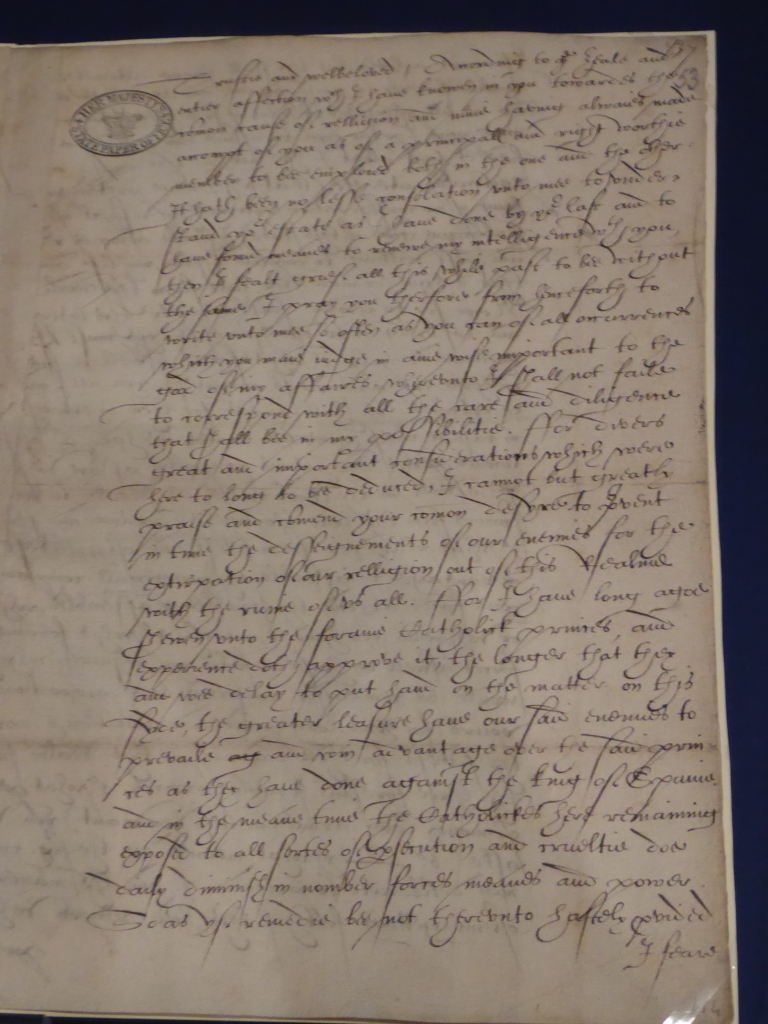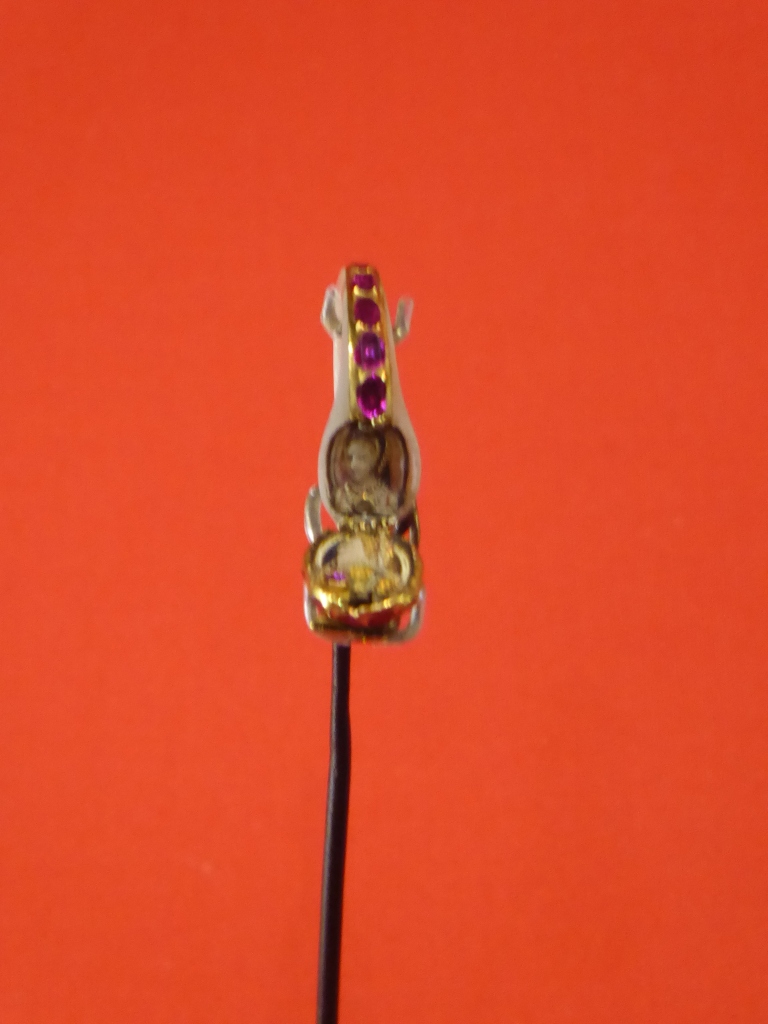I’ve been so busy recently it’s taken me a while to get round to putting this up on my blog – back in November when I was in London, as well as going to the Tower of London, Natural History Museum, and on a Jack the Ripper walking tour I, of course, had to find time to visit the British Library to see their exhibition on Elizabeth I and Mary Queen of Scots. This was just perfect timing, given that I was writing my first book on Elizabethan Rebellions which Mary was a huge part of.
There was so much to see and take in during the exhibition: portraits, books, letters, papal bulls, and jewellery. It was a real insight into the minds of these women and how they were trying to negotiate the murky political waters of the sixteenth century. Here I’m going to talk about just a couple of things in the exhibition which made a huge impact on me.

The first is the letter from the Privy Council agreeing to the execution of Mary Queen of Scots. The original warrant long ago went missing, so this is the closest thing that we have. To see the signatures of William Cecil, Henry Carey Lord Hunsdon, Francis Knollys, and Charles Howard demonstrates just how willing these men were to go over and above their Queen and threaten the very idea of divine right in order to safeguard Elizabeth I’s throne. Mary was just too dangerous to be allowed to live and Elizabeth wouldn’t be safe while she did.

The second was the Babington ‘gallows’ letter which Mary Queen of Scots sent to Anthony Babington in 1586 during the Babington Plot and which led directly to her own execution the following year. The original was written in code and then burnt by Babington once he’d read it. This is a copy made by Walsingham’s codebreaker, Thomas Phelippes. When Phelippes realised that the letter incriminated Mary Queen of Scots in treason he drew a gallows on his copy before sending it onto Walsingham as evidence, hence the name ‘gallows letter’.
The final two things I’m going to talk about, I’m going to do together as they are related to one of my favourite Tudor people – Anne Boleyn. The exhibition included the written announcement of the birth of Elizabeth I in 1533 which was amazing to see, and the famous Chequers ring, which has portraits of Elizabeth I and, allegedly, Anne Boleyn, though this has never been conclusively proven. It seems likely, however, as Elizabeth wore it and never took it off until her death. It’s a stunning piece, smaller than I had imagined but absolutely beautiful. It links the two women together and helps us to consider what Elizabeth might have thought about her mother, who had been executed by her father when she was just 2 years old.


If you want to catch the exhibition before it closes, it is on at the British Library for another week, until 20th February 2022, or you can do a digital tour online.

